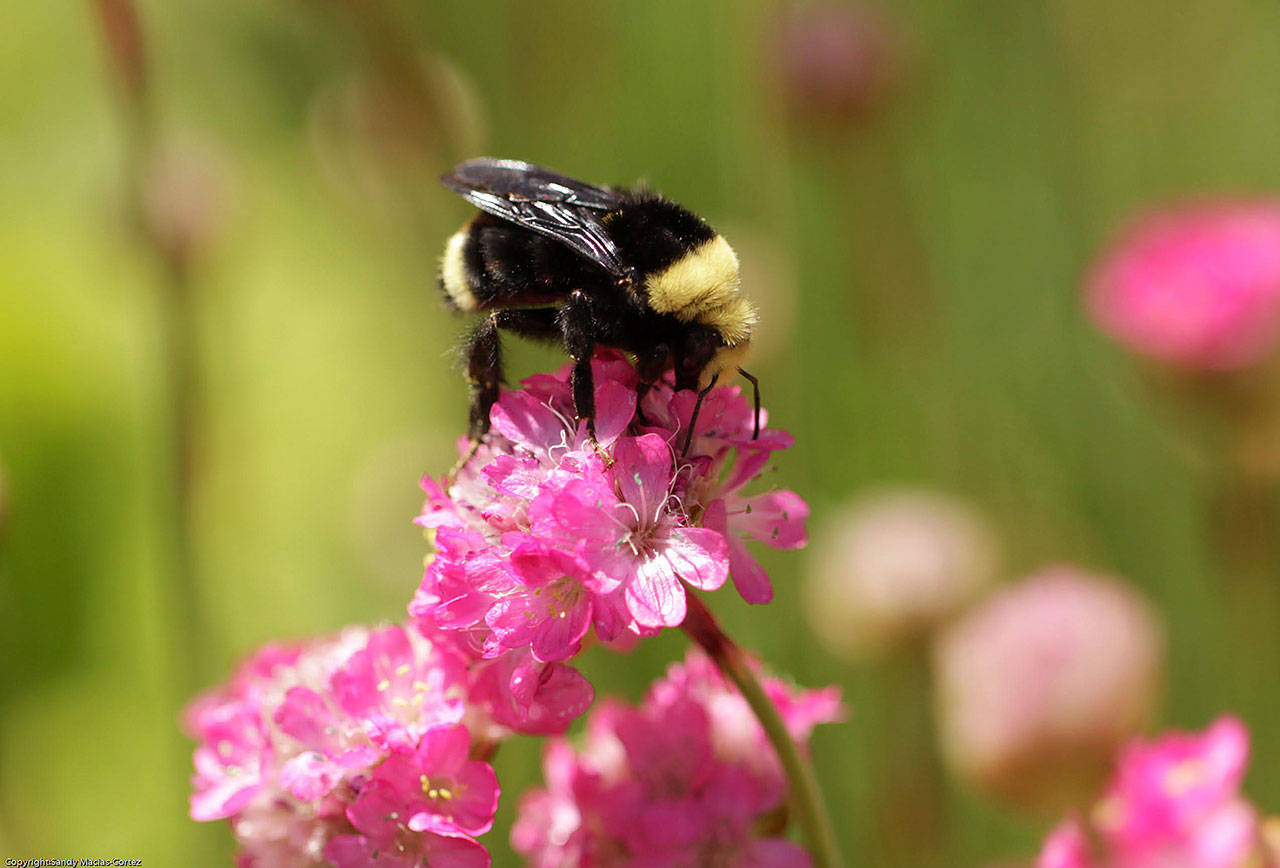Last week’s column, “Creating a Pollinator Garden,” talked about planning and planting your garden to attract and keep pollinators, including bees, butterflies, insects and others.
It is bees, however, that do the lion’s share of the work when it comes to pollinating trees, shrubs, ornamentals and food crops. And, native bees are better and more efficient at pollinating native crops.
There are several types of native bees on the Olympic Peninsula including bumble bees, mason bees, leafcutter bees, plasterer bees, sweat bees and mining bees.
Native bees are quite gentle and well-behaved residents of the garden. Most types are solitary, which means they do not live in colonies. Instead, each individual female bee is responsible for providing pollen and nectar for every egg she lays. This means solitary bees are not aggressive; the females are unlikely to sting, and the males cannot sting at all. There is no hive to defend, and there is a lot of work to get done!
Bumble bees and some species of sweat bees are social bees that do live in colonies founded by queens, but these nests are usually no more than 100 individuals, and these bees are generally not aggressive.
Native bees can be encouraged by providing an attractive habitat. A home garden, welcoming to bees, does not have to be a big undertaking. There are a few garden practices that help bees, especially native bees, to thrive.
First and foremost, avoid pesticides. Bees are easily killed when near vegetation that has been treated with chemical or organic-type pesticides. If it’s absolutely necessary to use pesticides, be sure the plant to be treated is not in bloom.
Next, there must be food. Different bees emerge at different times, from early spring to mid-fall.
A new bumble bee queen emerges at the very first sign of spring and gets right to work. She needs an energy drink fast, and so early bloomers like heather and hellebores are a great help. Bumble bees then keep flying until fall, so the goal is to have something in bloom all the time (even if it’s dandelions!)
Mason bees fly for only a few weeks in spring, when temperatures reach 55 degrees. These bees are wonderful pollinators of fruit trees but will also visit and pollinate many spring flowers if the apple blossoms are not yet open.
Leafcutters wait to emerge until the temperatures are closer to 80 degrees, so they pollinate the summer flowers and vegetable gardens.
Shelter for native bees is often overlooked. When tidying the garden, leave some exposed soil with little or no mulch. Seventy percent of all types of native bees nest in the ground. Bumble bees will hibernate over winter in the ground. The solitary and non-aggressive behavior of native bees makes this a safe and acceptable location.
Designate an area in your pollinator garden to be undisturbed with a little garden debris like hollow stems and leaves. Leafcutter bees, mason bees, and plasterer bees will nest in hollow stems, cavities in wood or on the ground under rocks or logs. Mining bees and solitary sweat bees look for pencil sized tunnels existing in old wood.
Finally, provide water. A shallow dish with smooth stones looks nice and allows bees to drink without falling in. Small puddles that remain after watering the garden work too as mason bees need mud to seal up their nests.
Native bees do an essential job of pollinating vegetables, berries, and fruits, along with flowers, shrubs and trees. By planning and protecting an inviting habitat, they will thrive and continue to show up for work.
Trailer: This is just a brief introduction to some of our native bees. For more detailed information go to pubs.extension.wsu.edu and enter EM110E into the search field for “A Citizens Science Guide to Wild Bees”
Cece Fitton has been a Master Gardener volunteer since 2017. She is on the team developing the pollinator garden at Woodcock Demonstration Garden.


